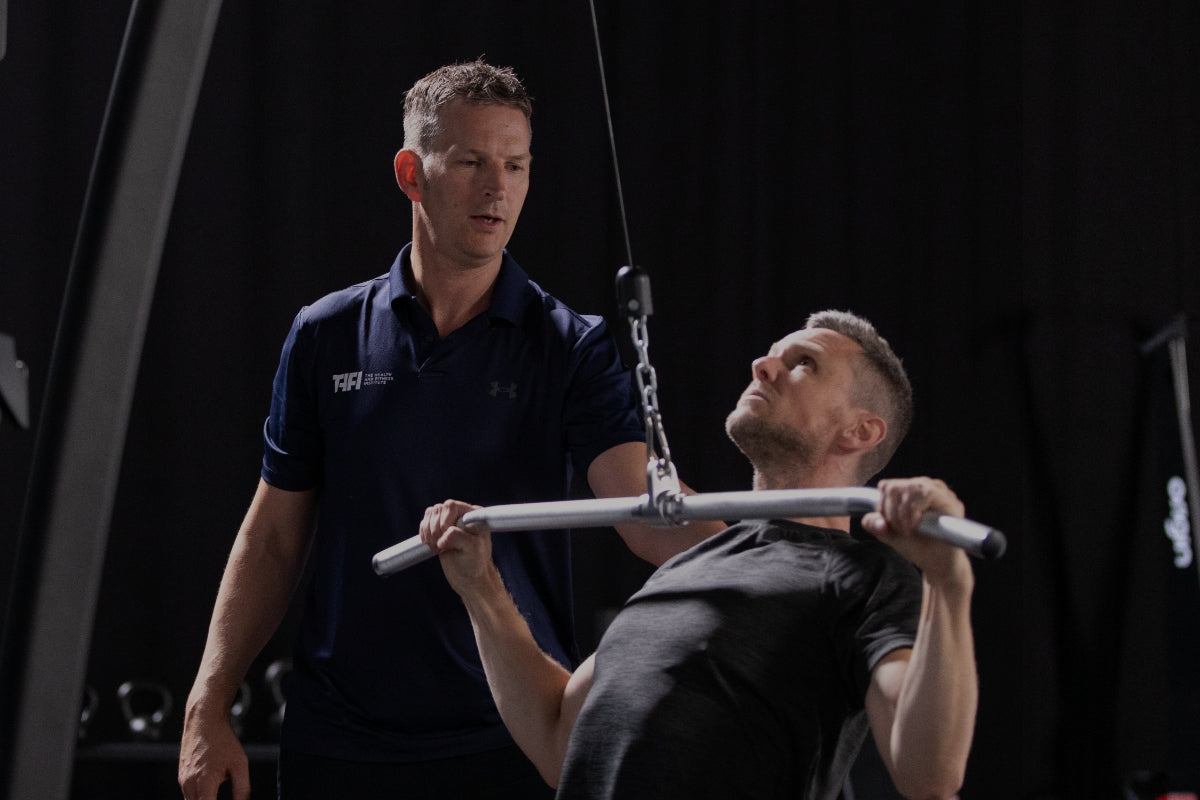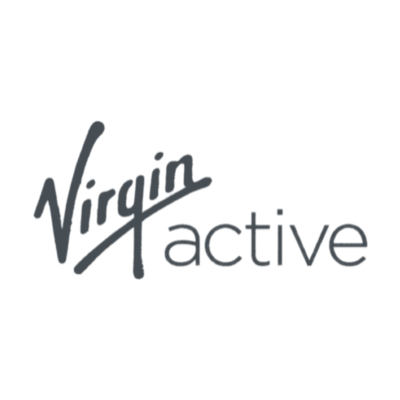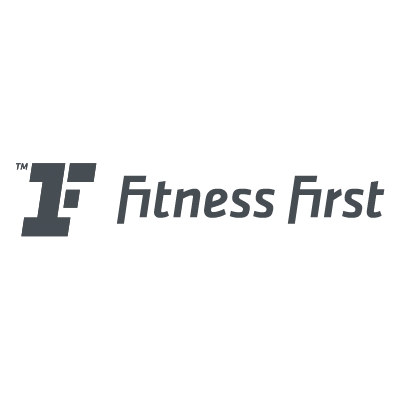5 Best Practices for Career Success Every Personal Trainer Needs to Know

Ever wondered why some personal trainers seem to effortlessly climb the ladder of success while others struggle to hold on?
The difference often comes down to best practices and habits that lay the foundation for success.
Many of these best practices are first introduced during your personal trainer courses – forming the foundation for how you coach, communicate, and grow in your career.
This article dives deep into the nitty-gritty of being not just a good personal trainer, but being truly great.
Following industry-standard best practices is your ticket to longevity, customer satisfaction, and financial growth in your fitness career.
You'll walk away with actionable insights, backed by years of experience and evidence, that you can apply immediately to benefit both your career and your clients.
So if you're committed to making a meaningful impact in this industry, read on and transform your career starting today...
Understand the multifaceted role of a personal trainer
In the world of personal training, the best are not just defined by the number of squats or press-ups they can instruct a client to do. They are defined by the connection they foster, the trust they build, and the holistic support they provide. Here, we delve deeper into the multifaceted roles you'll play in your client's fitness journey.
Becoming a coach, counsellor, and friend
As a coach: Your role is to design workouts that align with your client's fitness goals and instruct them on proper form and technique. This is the bread and butter of your profession and requires constant upskilling. The fitness industry is ever-evolving, with new methods, techniques, and equipment constantly emerging. Stay updated, be innovative, and always provide your clients with fresh, exciting routines that keep them motivated.
As a counsellor: This doesn't mean delving into deep-seated traumas or offering psychological therapy, but rather listening to your client's worries and fears about their fitness journey. Maybe they're self-conscious, perhaps they're demotivated or frustrated by a plateau. Your role is to be an anchor of support, offering professional advice and reassurance when needed.
As a partner: Building rapport is essential. Clients are more likely to trust and feel comfortable around you if they see you as a partner who is invested in their goals too. This creates a safe space where they feel free to share their challenges and celebrate their achievements, be it in or out of the gym.
The emotional intelligence factor
In a career so deeply intertwined with personal interactions, emotional intelligence (EQ) is paramount. EQ is your ability to perceive, understand, manage, and regulate emotions – both yours and those of your clients.
Having high EQ means you can:
- Tune into subtle cues: Maybe your client isn't saying it, but their body language might reveal they're uncomfortable with a certain exercise.
- Handle difficult conversations tactfully: Whether it's about lack of progress, unrealistic expectations, or addressing inconsistencies in their commitment.
- Motivate and inspire: By understanding what drives your clients emotionally, you can tap into that reservoir to push them forward and keep them accountable, especially on their tougher days.
Embracing these roles and sharpening your emotional intelligence not only sets you apart as an elite trainer but also ensures your clients feel valued, understood, and empowered in every session. And when clients feel this level of dedication and support, they don't just see results; they advocate for you, becoming walking testimonials of your expertise.
1. Craft the ideal routine
Success in personal training doesn't just stem from knowing the latest fitness trends or having the best equipment. It comes from a deeper understanding of oneself, crafting a work-life balance that sustains energy, passion, and dedication to each client. An optimal routine is key to maintaining this equilibrium and avoiding burnout.
Here’s how you can shape that ideal schedule.
Identify your prime times
Every individual has certain times in the day when they're at their most energetic and alert – these are your prime times. Recognising these windows can significantly boost your productivity and the quality of your sessions.
- Self-awareness check: Over a week, make a note of when you feel most active, energetic, and focused. Is it the early morning, midday, or evening?
- Schedule strategically: Once you've identified these prime times, try to schedule your most demanding clients or tasks during these windows. It ensures you're giving them the very best of yourself.
- Flexibility is key: While it’s important to capitalise on your prime times, be ready to adapt. As a personal trainer, client availability might not always align with your ideal schedule. Strive for a balance that respects both your prime times and your clients’ needs.
Find work-life balance for longevity
Burning out is a real risk in the PT industry. The demands of early mornings, late evenings, and the emotional energy expended can take its toll.
- Prioritise breaks: Just as muscles need rest to grow, so does your mind. Ensure you're setting aside time during the day for short breaks. Use this time to refuel, meditate, or simply catch a breath.
- Set boundaries: Make it clear to your clients when you're off the clock. It's crucial for maintaining a personal space and time for rejuvenation.
- Diversify your day: Breaking the monotony can be refreshing. Slot in different tasks between client sessions - perhaps some admin work, a quick workout, or even some personal reading.
- Remember yourself: It's easy to get caught up in focusing on your clients' well-being and forget your own. Keep time for your personal workouts, hobbies, and social life.
Crafting an ideal routine that champions both professional commitment and personal well-being is not just beneficial – it’s essential. It ensures you remain passionate, driven, and at the top of your game, day in, day out. The secret to longevity in the PT world isn’t just about crafting workouts for others but also about creating a sustainable life routine for yourself.
2. Streamline your admin and organisation
While the spotlight often shines on the physical transformations and fitness achievements, there's a behind-the-scenes element to a personal trainer’s success that often goes unnoticed: administration and organisation. These factors, while seemingly mundane, can be the backbone of a flourishing career in personal training. A seamless admin process not only streamlines operations but also enhances the client experience.
Systems for client management
A haphazard approach can cost a PT not just time but also potential income and client trust. Building robust systems for client management is non-negotiable.
Use apps like Trainerize and True Coach
Modern problems require modern solutions. Digital aids can make the management process smoother and more efficient.
- Trainerize: this platform allows you to deliver clients' training plans directly to their smartphones. It provides a two-way interaction, enabling clients to log their workouts, meals, and progress, while trainers can monitor, adjust, and provide feedback in real time.
- True Coach: Similar to Trainerize, True Coach offers detailed tracking of a client's fitness journey. With features such as video exercise libraries and nutrition logging, it’s a comprehensive tool every PT should consider.
Google Suites for seamless interaction
The digital age presents numerous tools to facilitate easy interaction between client and trainer. Among them, the Google Suite stands out for its user-friendliness and versatility.
- Google Sheets: Perfect for live check-ins. Trainers and clients can both input data simultaneously, keeping track of goals, sessions, and milestones. It's dynamic, shareable, and cloud-based, ensuring access from any device.
- Google Mail: Beyond just email communication, Gmail allows for categorisation, flagging, and scheduling, ensuring you never miss an important client email or meeting.
Time management strategies
The clock, while a constant, can either be an ally or an adversary. Effective time management can make the difference.
- Allocate admin time: Dedicate specific time slots during the week solely for administrative tasks. This ensures that they don't eat into client sessions or personal time.
- Prioritise tasks: Not everything that's urgent is important. Understand the difference and tackle tasks that align with your larger goals first.
- Set clear expectations: It's pivotal to set clear communication expectations with clients. If you have a designated response time (say 24 hours), make sure your clients are aware of it.
Organisation and structured admin might not seem like the glamorous parts of being a personal trainer. However, they can quietly dictate the trajectory of your success. After all, in an industry where client trust and timely responses can make all the difference, being meticulously organised is more than just a best practice – it’s an art that promises growth and prosperity.
3. When and how to refer a client
In the realm of personal training, ambition and desire to help clients achieve their best selves is a commendable trait. However, true professional maturity is recognising that you can't always be the solution to every challenge your client faces. There will be times when the best way to help your client is to refer them to another professional.
Recognise your limits
Every professional, irrespective of their expertise, has boundaries to their knowledge and skills. Here's how to recognise yours:
- Specialised concerns: While a PT can guide on general nutrition, if a client has a specific dietary concern or ailment, it might be more appropriate for a nutritionist or dietitian to intervene.
- Health concerns: If a client has recurring pains or injuries, rather than suggesting general remedies, it's prudent to recommend a visit to a physiotherapist or an osteopath.
- Emotional and mental well-being: A large part of a trainer’s role involves offering emotional support. However, if a client's emotional or mental health challenges seem beyond the scope of your training, suggesting a mental health professional or counsellor might be the best course of action.
It's crucial to approach these situations with empathy and sensitivity. Always frame your recommendation in a way that assures the client you're acting in their best interest.
Build a network of experts
Creating a network of trusted professionals in allied industries isn’t just beneficial for your clients, but also for your own growth.
- Start local: Engage with local practitioners, attend workshops, and participate in community events. This isn't just about referrals; it's about building a supportive professional community.
- Mutual referral systems: Establish connections where you refer clients to experts and they, in turn, refer their clients to you for fitness needs. This becomes a symbiotic relationship ensuring growth for both parties.
- Stay updated: Ensure that the professionals you refer clients to are up-to-date with the latest in their field, just as you would in the realm of fitness. It’s about ensuring your client gets the best care and advice.
Referring a client isn't an admission of inadequacy. Instead, it's an assertion of your commitment to their holistic well-being. By recognising your limits and leaning into a network of experts, you provide the client with comprehensive care, solidifying their trust in you and reinforcing your reputation as a genuine, top-tier personal trainer.
4. Prioritise your own health
While focusing on the wellbeing of clients, personal trainers often forget a salient point: You can't pour from an empty cup. Your own health – both physical and mental – is the foundation upon which your professional success is built.
The importance of your own training times
As trainers, we preach the gospel of regular exercise, consistency, and dedication to our clients. But are we practising what we preach?
- Empathy through experience: Regularly subjecting ourselves to the grind of a workout, the soreness after a particularly hard session, or the thrill of achieving a personal best allows us to better understand and empathise with our clients. It's one thing to know the theory; it's another to live the experience.
- Stay updated with trends: Having your own training regimen allows you to experiment with new techniques, equipment, or training methods. Before introducing something new to your clients, you've tested it on the best subject: yourself.
- Maintain professional credibility: Let's be honest. Clients expect their trainers to look the part. While there's no single "fit" body type, keeping yourself in good shape acts as a testament to the effectiveness of your training programmes.
- Energy reservoir: Regular workouts boost your stamina, ensuring that you're energised and present for each client, even if they're your fifth session of the day.
Build mental resilience through physical fitness
We're no strangers to the mental benefits of physical activity: boosted mood, reduced stress, better sleep. But there's more to the story, especially for personal trainers.
- Reduced burnout: The mental release that comes with a good workout can be the difference between feeling invigorated by your job and feeling drained by it. Think of your sessions as a reset button, helping you approach each day afresh.
- Mindfulness and presence: Activities like yoga, Pilates, or even meditation can hone your ability to be present in the moment – a crucial skill when you're assessing a client's form or listening to their concerns.
- Building mental fortitude: Just as we push our bodies past comfort during workouts, we also challenge our minds. This develops a resilience and grit that translates beautifully into professional challenges, whether it's handling a difficult client or navigating business hiccups.
To truly serve others, we must first ensure we're taken care of. Your health, both physical and mental, isn't a luxury – it's a cornerstone of your professional journey. Invest in it with the same vigour and dedication you ask of your clients. After all, a thriving trainer breeds thriving clients.
5. Establish professional boundaries
Look, you're in this profession to make a difference, to transform lives through fitness. But you can't be all things to all people. To thrive in this demanding environment without losing yourself, establishing clear boundaries is a non-negotiable.
Set client expectations
- Clarity from the get-go: During your initial consultation, make sure your clients understand your scope of practice. Clearly outline your responsibilities as well as their commitments to ensure a mutual understanding.
- Document it: Create a service agreement or contract that specifies what the client can expect during the training period. This includes your rates, cancellation policy, and the scope of your services.
- Consistency is key: Be consistent in your messaging. Don't promise 24/7 availability if you can't deliver. If clients know you'll answer texts only during business hours, it helps manage their expectations.
- Check-ins and feedback: Periodically, take time to discuss the client's progress and any adjustments to the training program. These are also moments to reaffirm the boundaries and expectations.
The Power of 'No'
-
Respect your time: If a client consistently shows up late or cancels at the last minute, don't hesitate to enforce your cancellation policy. It's not just business; it's a matter of self-respect.
-
Know your limits: Don't offer advice in areas where you are not certified. Whether it's diet, mental health, or medical conditions, stick to your remit.
-
Protect your personal space: Maintain a professional distance. Being friendly is great, but oversharing personal information can blur the lines between professional and personal relationships.
-
Your days off are sacred: Yes, you want to be accommodating, but you also deserve time to recharge. Stick to your working hours and don't feel guilty about it.
Conclusion
Best practices aren't just guidelines or a box to tick off; they're the bedrock of a successful, rewarding, and enduring career in personal training. From understanding your multifaceted role and crafting your ideal routine to mastering admin, knowing when to refer a client, prioritising your health, and setting firm boundaries – you're setting yourself up for long-term success.
These practices aren't just about you; they resonate through your entire business ecosystem. When you're at your best, your clients get the best, which feeds back into your success and reputation.


























